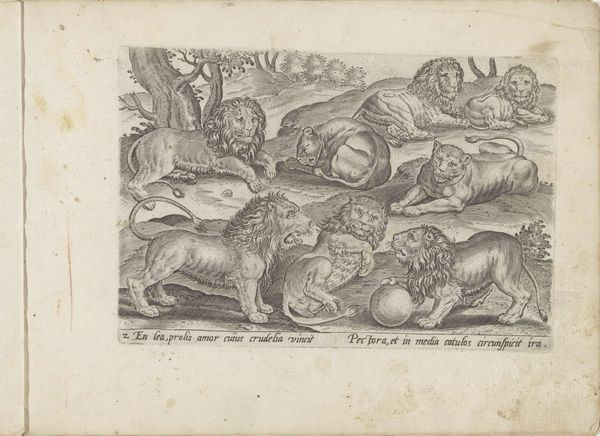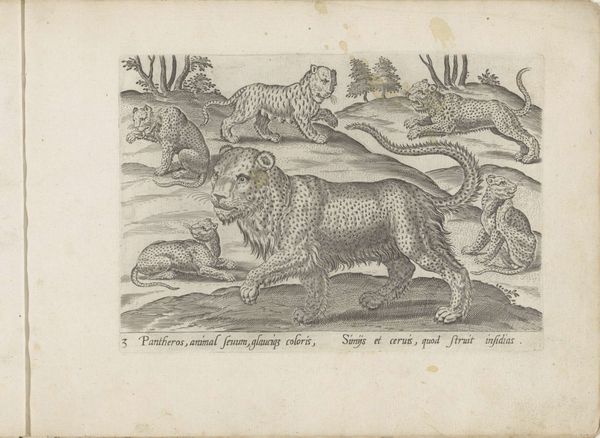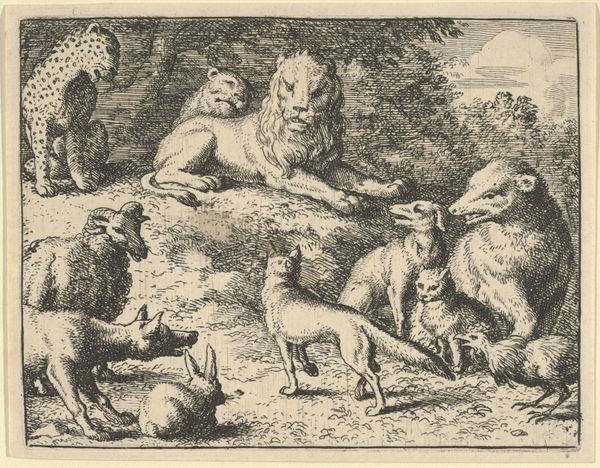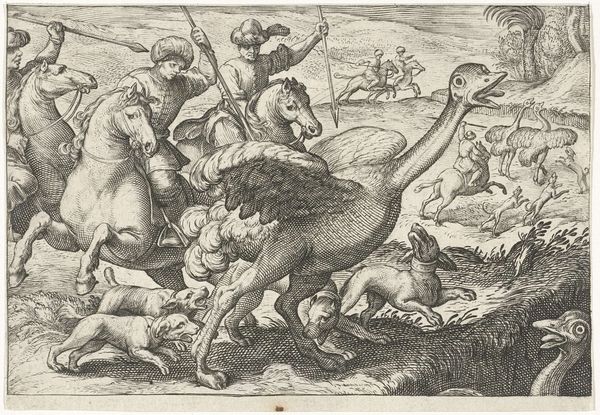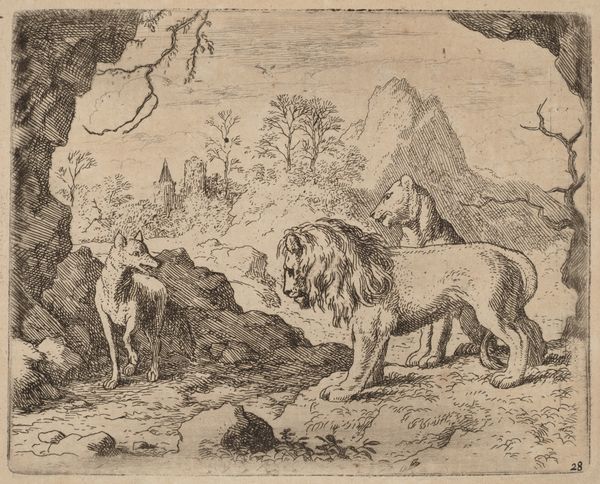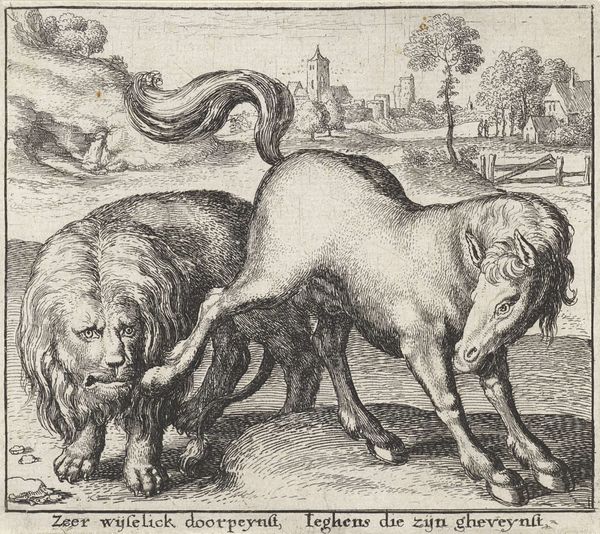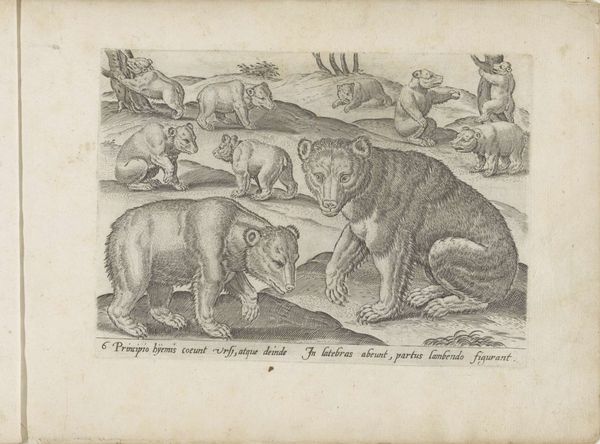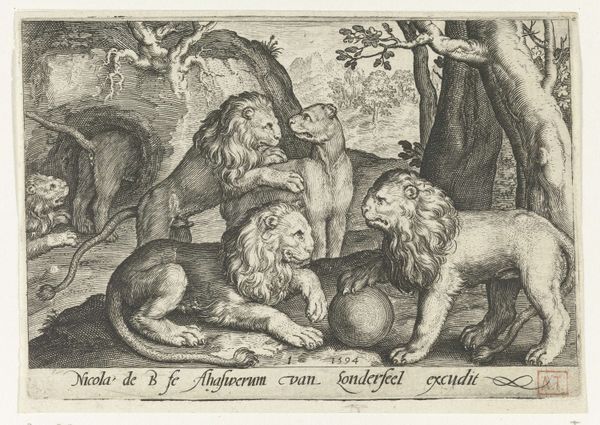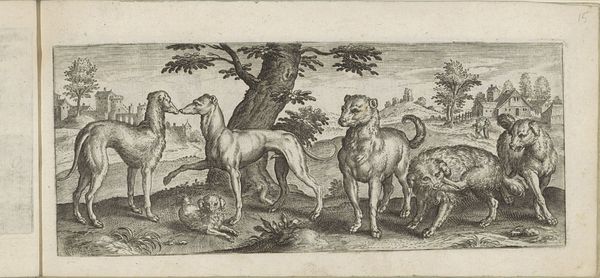
drawing, print, engraving
#
drawing
#
animal
# print
#
mannerism
#
figuration
#
history-painting
#
engraving
Dimensions: height 121 mm, width 168 mm
Copyright: Rijks Museum: Open Domain
Editor: So this print, “Leeuwen,” attributed to an anonymous artist around 1581-1600, depicts a pride of lions through engraving. There’s something almost frantic about their movements, they seem tense. What do you see in this piece, beyond the surface representation? Curator: Well, situating this within its historical context – Mannerism – we must consider power structures. Notice how these lions, symbols of strength, are rendered almost nervously, their poses strained. Could this be interpreted as a commentary on the anxieties of leadership during a time of political and religious upheaval? Editor: That’s a really interesting take. I was focused on the literal depiction, but I see what you mean. The inscription, partially visible, also suggests a narrative. Curator: Exactly. It speaks to the lion being dubious when facing a common foe. We should question: who is this 'foe'? Are the lions representing a specific ruling class or perhaps even a set of ideas being challenged? And by depicting them as agitated, what is the artist suggesting about their legitimacy, their ability to truly lead? Editor: So, the artist isn’t simply depicting lions but critiquing a system or group by personifying them? Curator: Precisely! Think about the power dynamics inherent in creating art for a patron. What could be subtly communicated about dissatisfaction or unrest through symbolic representation? Editor: I never considered the animal representation that way. I guess that these kind of symbolic animals could stand as proxies within sociopolitical discourse. I will look at art with a new, wider, lens from now on. Thanks! Curator: Indeed. Every detail, from the lions’ expressions to the overall composition, contributes to this reading of anxious authority, offering a glimpse into the artist's sociopolitical sentiments and potentially into the anxieties of the time.
Comments
No comments
Be the first to comment and join the conversation on the ultimate creative platform.
